
COMMUNICATION STUDIES
Most of what we "know" is actually second-hand knowledge,
information and insight that we obtain from others. Further, how
we come to know anything is grasped in terms of symbols, and the meaning
content of symbols is, in large part, determined by the form in which they are socially
shared. Because of technological innovations, such as the inventions of
television and computers, these symbolic forms are being fundamentally
altered. It is for this reason that Marshall McLuhan (1967) argued that
the medium is the message; what's important is not, for instance, what
people watch on television but rather that they watch it. Given their symbolic
dependency, changes in both social systems and self-systems have resulted.
Communications determinists argue that culture and institutions are
only subsystems of communications technology. Harold Innis (1951), for
instance, observed how all mediums of communication are biased in terms
of their control of time or space. Media that are durable and difficult
to transport--such as the clay tablets upon which ancient Babylonians etched
their cuneiform or the stone columns on which ancient Egyptians affixed
their hieroglyphics--are time-binding or time-biased. Media that are light,
easily transportable, but less durable--such as television waves, telephone messages, or the thin parchment
carried by pony express riders in the 1860s--are said to be space-binding.
Innis argued that space-binding
media encourage the growth of the state, the military, and decentralized
institutions. Time-binding media, on the other hand, foster concern with
history and tradition, and favor the growth of religion and hierarchical
organizations.
STUDIES OF THE
MEDIA
- The Media History Project--"Promoting the study of media history from petroglyphs to pixels"
- UCLA's Center for Communication Policy--with annual
internet usage reports, violence assessment monitoring project, survey of Hollywood beliefs and values, and extensive media resources listings
- Sarah Zupko's Cultural Studies Center
- SocioRealm's collection of media studies

- The Media and
Communication Studies Site (U. of Wales)
- Mick Underwood's Communication, Cultural and Media Studies (U. of Queensland)
- Article
Index - Jones Multimedia Encyclopedia Update
- Mediamark Research Inc. "the leading U.S. supplier of multimedia audience research"
- American Journalism Review
- Columbia Institute for
Tele-Information

- Bruce Jones's The
History of Printing
- Museum of Broadcast
Communications
- Newseum: The Interactive Museum of News
- American Museum of the Moving Image--containing "the nation's largest and most comprehensive holdings of
moving image artifacts"
- British Universities Film and Video Council's Moving Image Gateway --"a new service that collects together websites that relate to moving images and
sound and their use in higher and further education"
- American
Communication Association WWW--numerous links

- PopCulture.com's Mass Media/Communication
Links
- SPEED_Home:
Technology, Media, Society Archive of Issues
- University of Iowa's Dept. of Communication Studies Communication
Resources on the Web
- Media
Watch
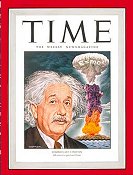
- Welcome
To HotWired!
- Media Education
Foundation
- Centre for
Media Sociology--Belgium
- CommWeb - The Resource
Center for Communication Professionals
- Boston University's
College of
Communication
Media for Disseminating
the "News"
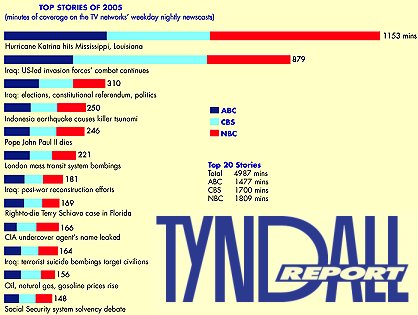 So from where do Americans get their information about the events shaping the
course of their lives? In addition to my own analyses of the
1995 Washington Post/Kaiser Foundation "Why Don't Americans Trust the
Government" survey, take a look at the 1998
Pew Research Center's Biennial News Consumption
Survey. Notice an increase in fake news reporting politically- (or
corporately-) slanted "research"? Check out the sources at
SourceWatch.
So from where do Americans get their information about the events shaping the
course of their lives? In addition to my own analyses of the
1995 Washington Post/Kaiser Foundation "Why Don't Americans Trust the
Government" survey, take a look at the 1998
Pew Research Center's Biennial News Consumption
Survey. Notice an increase in fake news reporting politically- (or
corporately-) slanted "research"? Check out the sources at
SourceWatch.
Professional Organizations
- Radio-Television News Directors Association and Foundation
Media Monopolies: Who Owns What? A Democratic Threat?
- Prof. Aaron Moore's (Dept. of Sports Media, Ithaca College) Media Giants Frontline's
Who Owns What?
- Columbia Journalism
Review's Resource Guide on Media Companies and What They
Own
- Media Giants (as of Feb. 2001) from PBS's Frontline's
Merchants of Cool
- Project for Excellence in Journalism's
Media Ownership and Deregulation
- Tom Goldstein's
"Does Big Mean Bad?"
Toronto School: Marshall
McLuhan and Harold Innis Resources
- The
Communication Institute for Online Scholarship's (CIOS) McLuhan website
- Project McLuhan
- Who was Marshall
McLuhan?
- The McLuhan
Probes
- The Resonating
Interval: Exploring the Tetrad
- Harold
Innis
CYBERCULTURE AND THE SOCIO-CULTURAL &
SOCIAL-PSYCHOLOGICAL IMPACTS OF INFORMATI0N TECHNOLOGIES
Our greatest fear is that the Internet will become a vehicle of free distribution of information.
--Ken Wasch, President, Software Publisher Association
(Washington Post, Sept. 6, 1995)
 Sociology of knowledge types must be having a
field day these days. With the internet, information is no longer
filtered by such traditional intermediaries as gatekeepers and opinion
leaders. Have an ailment like Graves Disease and, with the resources
on the WWW, one can be more up-to-date than one's overworked, HMO-ed
endocrinologist. Want to check the veracity of a Presidential candidate's
claims? According to the Pew Internet
& American Life project's 2001 study, more than one-half of those with
work access and one-quarter of those with home access said they went online
several times a day.
Sociology of knowledge types must be having a
field day these days. With the internet, information is no longer
filtered by such traditional intermediaries as gatekeepers and opinion
leaders. Have an ailment like Graves Disease and, with the resources
on the WWW, one can be more up-to-date than one's overworked, HMO-ed
endocrinologist. Want to check the veracity of a Presidential candidate's
claims? According to the Pew Internet
& American Life project's 2001 study, more than one-half of those with
work access and one-quarter of those with home access said they went online
several times a day.
 According to a study by search engine maker Inktomi
and the NEC Research
Institute, the year 2000 began with one billion pages on the Web. In the
Presidential campaign of that year, candidate Al Gore argued that high-speed
internet access "a fundamental civil right." Track the top
subjects of daily searches at Yahoo! with its Buzz
Index.
According to a study by search engine maker Inktomi
and the NEC Research
Institute, the year 2000 began with one billion pages on the Web. In the
Presidential campaign of that year, candidate Al Gore argued that high-speed
internet access "a fundamental civil right." Track the top
subjects of daily searches at Yahoo! with its Buzz
Index.
 Undoubtedly the web's greatest impact is its democratization of messages.
With this medium, anyone can be a news reporter or anchor, columnist, reviewer
or critic, news or documentary photographer, artist,
broadcaster, DJ, music distributor, film producer,
teacher, PR department, or advertising agency, and have one's messages
disseminated worldwide.
Undoubtedly the web's greatest impact is its democratization of messages.
With this medium, anyone can be a news reporter or anchor, columnist, reviewer
or critic, news or documentary photographer, artist,
broadcaster, DJ, music distributor, film producer,
teacher, PR department, or advertising agency, and have one's messages
disseminated worldwide.
- Library of Congress' Explore the
Internet, including info on its history
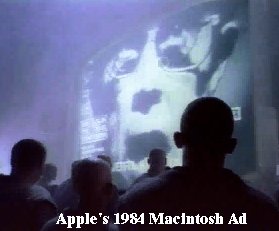
- Harvard Law's Berkman Center for Internet and Society
- Alan Liu's Voice of the Shuttle: Cyberculture
-
First Monday a peer-reviewed journal on the internet
- Peter Kollock's "Sociology of Cyberspace" course (UCLA)
- Marc A. Smith and others at Microsoft are engaged in some fascinating analyses of our electronic
interactions and the new social structures being formed. Track Internet activities with
Netscan, whose goal "is
to collect base-line measures of the Usenet, its structure and dynamics so as
to map of the kinds and qualities of the groups and institutions that form
when people use the net to interact with one another. Netscan provides a range
of measures of activity in the Usenet including the number of messages in each
of the groups studied and the number of people who participate in them."
- Martin Dodge's
The Geography of Cyberspace Directory (University College London)
- What key words are people entering into search engines? Find out at
Yahoo!s Buzz Index, Metaspy,
About.com's "Search
Engine Spying," and at The Lycos 50
Daily Report.
- Pew Research Center's Internet and American Life
- Steve Baldwin's Ghostsites: an image gallery preserving the home pages of sites that
expired 1998-2003
- Need some stats on internet use and e-commerce? Check CyberAtlas

- PBS's Digital Divide--"shines a light on the
role computers play in
widening social gaps
throughout our society,
particularly among
young people"
- Social and Economic Implications of Information Technologies: A Bibliographic Database Pilot Project (NSF)
- Carnegie Mellon's HomeNet Project
- Identity Theft
- cyberanthropology.org

CENSORSHIP
- The
Press Freedom Database (of the Committee to Protect Journalists)
- FAIR Fairness and Accuracy In Reporting
-
Yahoo directory on Censorship and the Net
- Know Your
Enemies
- Project
Censored
PRIVACY
- Center for Democracy and Technology

WHAT'S NEW?

- Compiled by ResourceShelf's
librarians, DocuTicker, "a daily update of new reports from government agencies, ngo's, think tanks, and other groups"
- CNN Interactive
- U.S. Newswire--"the leading news release wire service for public
interest news sources"
- Search of AP
Wire
- NewsLink menu (c)
1995
- Oneworld.net--alternative news with international focus
- Information Clearing House "News you won't find on CNN or Fox Mooooo's"
- Today's Front Pages
--check out the front pages of newspapers throughout the world

- What international events should we know about but fail to make the front page? See the UN's 10 Stories the World Should Hear About
- NewPages.com--information on
"independent bookstores, independent publishers, literary
periodicals, alternative periodicals, independent record labels,
alternative newsweeklies and more"
- PBS Online NewsHour
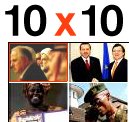
- CBC News
Experiment
- CBS News
- FOX News
- Ananova--with instant search of breaking news
- POSITIVE PRESS--countering
the media's tendency to focus on the negative
ELECTRONIC
NEWSPAPERS
- NewsLink--links to
hundreds of newspapers, magazines
- The Ultimate Collection of
Newslinks (broken down by continent, country, and state)
- NewsVoyager "A gateway to your local newspaper"
- OnlineNewspapers.com--from Web Wombat, an index
to 10,000 online newspapers from around the world
- ABYZ News Links--Links to over 15,800 newspapers and other news
sources from around the world.
- The Newspaper Association of America's
"NewspaperLinks"
- The New York Times on the
Web

- Washington Post
- Christian
Science Monitor
- Los Angeles Times
- The Chicago Tribune
- San Francisco
Examiner News Wires Page
- Boston Globe
Online: Search (15 yrs. of articles)
- USA TODAY
- San Francisco
Examiner News Wires Page
- The Austin
Chronicle
- San Antonio
Express-News Online Home Page
- Compare the front pages of newspapers in the U.S. and around the world at
Newseum: The Interactive Museum of News
NEWS FROM THE PAST

- Brooklyn Daily Eagle
online: 1841-1902
FOREIGN PAPERS
- The Internet Public Library: foreign news
- Online Newspapers.com--links to papers from around the world
- London
Telegraph
- The Guardian
- TASS
- Maximov --News, Information
And
Guide To The Russian Federation
PRINT MAGAZINES
BECOME ELECTRONIC
ZINES
- New Jour--Electronic Journals
& Newsletters
- Slate
- SALON:
Current Issue
- Third Age - The Web for
Grownups
- CyberWire Dispatch,
by Brock N. Meeks
- Hype
- Suck

CASE STUDIES OF
THE VARIOUS MEDIA
TELEVISION
What this generation was bred to at television's knees was
not wisdom but cynicism.
--Pauline Kael (1919- ), American movie critic
Television--a medium. So called because it is neither rare
nor well done.
---Ernie Kovacs
 One half century after television's entry into American homes, the
medium remains a favorite scapegoat for the multitude of perceived social
and cultural ills arising in post-war American society. Its audience-attracting
themes of violence, for instance, are seen to underlie the historically-increasing
rates of aggression and homicide. U.S. News & World Report charged
in 1955 that the very mind and character of Americans was being altered
by television. Over the next twenty years the medium's potency to affect
both identity and social structure was to attract the energies of scholars
and popular writers alike. Among its suspected effects were (followed by
year argument first appearing according to author's informal survey of
popular literatures):
One half century after television's entry into American homes, the
medium remains a favorite scapegoat for the multitude of perceived social
and cultural ills arising in post-war American society. Its audience-attracting
themes of violence, for instance, are seen to underlie the historically-increasing
rates of aggression and homicide. U.S. News & World Report charged
in 1955 that the very mind and character of Americans was being altered
by television. Over the next twenty years the medium's potency to affect
both identity and social structure was to attract the energies of scholars
and popular writers alike. Among its suspected effects were (followed by
year argument first appearing according to author's informal survey of
popular literatures):
- Cognitive Impacts

- social factor responsible for a changing contemporary personality
(56)
- attributed as being the major cause of the decrease in magazine
reading (56)
- presents greater distraction for those with average to below average
education than for those with better education, who are less apt to repelled
by written words (56)
- strong force for social change (59)
- inadvertently transforms man's energies from active participation
into passive knowledge (60)
- restructures beliefs (63)
- brought about generation gap (69)
- increases total range and variety of press items read; increases
reading of daily and Sunday paper reading at the expense of weekly and
monthly magazines (69)
- those 30+ are "aliens in TV land" (71)
- causes "bandwagon thinkers" (71)
- hampers intellectual development and creativity (71)
- promotes adolescent egocentrism (71)
- informational overload (81)
- Affective Impacts
- has impacted housewives' leisure time (56)
- serves as an escape mechanism; relieves societal stress (59)
- is an exciting source of education, entertainment and cultural enrichment
for children (63)
- abnormalities of everyday life become normal TV news items (71)
- provides opportunities for emotional release and relaxation (71)
- communicates life in emotional rather than intellectual or rational
terms (71)
- imaginal desensitization of emotions (77)
- Behavioral Impacts
- Effects of TV on behavior (55):
- has similar effects for all classes, residential locations, and
duration of televiewing
- has greater effect on adults' behavior than childrens'
- has greater effect on blue collar workers' overt behavior than for
white collar workers
- has greater effect on behavior of suburbians than metropolitans
by and large
- evidence about the connection between viewing violence and viewer
aggression is often mixed, but with historically increasing support
- Professor John
Murray's "Impact of Televised Violence"
- "Sex on TV 2" A Biennial Report to the Kaiser
Family Foundation (2001)
- Todd
Gitlin's "Imagebusters: The Hollow Crusade Against TV Violence"
- National Coalition on Television
Violence
- reinforces materialism (71)
- contrary to popular belief, TV does not cause the elderly to disengage;
they relate to current affairs through TV viewing (76)
- shatters families (77).
 In the 1980s, the medium was accused of having effectively destroyed
childhood as a developmental stage (Postman 1982). In 1990, a Gallup survey
found nearly seven in ten Americans believing that they would be better
off or at least not adversely affected if television was to disappear from
their lives.
In the 1980s, the medium was accused of having effectively destroyed
childhood as a developmental stage (Postman 1982). In 1990, a Gallup survey
found nearly seven in ten Americans believing that they would be better
off or at least not adversely affected if television was to disappear from
their lives.
Such beliefs are reminiscent of the 1930s research which saw radio
technology centralizing, standardizing, and massifying (Lazarsfeld 1940).
Arnheim, for instance, writing a short decade after the radio became a
commercial success, condemned the new medium and its listeners in scathingly
contemptuous language:
Wireless relieves the listener from the necessity of `mental labours.'
Instead of an individual with definite preoccupations who ... seeks certain
things and rejects others ... the wireless listener bobs like a cork on
the waves, hears one after the other on endless succession of totally unconnected
things, and so entirely without a breathing space that he does not manage
subsequently to ponder and consider what he has heard. Which suits him
just as well (1936:264-65).
 And so for the past forty years the radio generation has informed
the younger television generations that they have been cognitively impaired
by their viewing practices, with such symptoms as shortened attention spans,
weakened linguistic abilities, eroded imaginations, impatience with
deferred gratification, and inability to distinguish information from wisdom. On the other hand,
radio was praised for its ability to evoke imagery, its creativity, and its ability to present
dramatic events. In fact, television's "Golden Years," we're told, coincided to
its early era when controlled by the radio elite. One wonders whether the
next forty years will feature the television generations similarly belittling
the virtual reality generations
And so for the past forty years the radio generation has informed
the younger television generations that they have been cognitively impaired
by their viewing practices, with such symptoms as shortened attention spans,
weakened linguistic abilities, eroded imaginations, impatience with
deferred gratification, and inability to distinguish information from wisdom. On the other hand,
radio was praised for its ability to evoke imagery, its creativity, and its ability to present
dramatic events. In fact, television's "Golden Years," we're told, coincided to
its early era when controlled by the radio elite. One wonders whether the
next forty years will feature the television generations similarly belittling
the virtual reality generations
 There is a prevalent view that the printed page is the only truly
intellectual medium. Other media are suspect in terms of their ability
to satisfy educational needs and are portrayed as "mere" entertainment,
at the least offensive end of the spectrum of contempt, to the creation
of mindless followers whose very emotional state is molded by the non-
print media, at the most hostile end of the spectrum. There is, one suspects,
a bit of the Protestant Ethic embedded in these critiques: if it is fun
and easy it must be bad; intellectual stimulation must be difficult, time
consuming, and "work."
There is a prevalent view that the printed page is the only truly
intellectual medium. Other media are suspect in terms of their ability
to satisfy educational needs and are portrayed as "mere" entertainment,
at the least offensive end of the spectrum of contempt, to the creation
of mindless followers whose very emotional state is molded by the non-
print media, at the most hostile end of the spectrum. There is, one suspects,
a bit of the Protestant Ethic embedded in these critiques: if it is fun
and easy it must be bad; intellectual stimulation must be difficult, time
consuming, and "work."
Click here to see the percent of Americans watching
four or more hours of television a day, by age and education. What measureable effects
does such viewership have?
Let's consider the relationship between the hours of television individuals watch
daily and their responses to the NORC General Social
Survey question "In general, do you find life exciting, pretty routine, or dull?" (variable
LIFE) What do you hypothesize this relationship to be? When thinking about your answer,
reflect on two possible causal directions that might underlie any correlation between these two
variables:
- the more individuals' watch television the less likely they report their lives as
being exciting. Here, in addition to arguing that those watching large amounts of
television are indeed living more boring lives, one might also claim that televised stories
occasion viewers to compare their lives with those on the screen, which may be more exciting
and glamorous than their own. One might further argue that this relationship weakens with
age, as social opportunities to be heroic often decline with advanced years. Click here to see
Percent of Americans who "in general find life exciting" by hours
of television daily watched, by age and education.
- those who live unexciting lives watch more television in order to add excitement to
their existence. Evidence for this direction of causality comes from the Somer's Dyx and
Dxy asymmetric measures of association: When correlating LIFE with hours of television daily
watched (recoded as 1 hour or less, 2 hours, 3 hours, or 4 or more hours), Somer's D when
LIFE is the dependent variable equals .14 while D when TVHRS is dependent equals
.19.
Such findings are often the disappointments for those attempting to demonstrate
television's causal effects using survey data. Typically there are extremely weak correlations
between hours watched and individuals' stereotypes, beliefs and fears. And even if moderate
relationships are located they generally are spurious, explainable in terms of individuals'
education and age.
Another research tradition has been to study the medium's demographic biases. For instance,
click here to
see the underrepresentation and stereotypical depictions of older persons.
Minorities and women fare no better. According to a survey
of prime-time shows during the Fall of 2000 by Children
Now, a child advocacy group, out of a total prime-time population of 2,251
characters, there were 145 black, 25 Asian, 18 Hispanic and no native American
female characters.
- TV
Net®

- TV
LINKS
- Welcome to The TV
Rundown
- Nielsen Media Research -
Interactive Services
- UltimateTV --
TV Biz -- Nielsen Media Research
- Vanderbilt Television News
Archive
- Ad Age -Facts &
Features - History of TV Advertising
- Museum of
TV
- Ascom
Standardization Service, Telecom Standards
- The History Channel
- Discovery Channel Online
- The BBCNC Home
Page
HISTORY OF
TELEVISION
- Museum of
TV
- Home Page of Rich Samuels:
Broadcasting in Chicago, 1921-1989

MOVIE AND
TELEVISION PRODUCTION
HOUSES
- Welcome to Warner Bros. Home
Page
RECORDINGS OF SOUNDS & IMAGES FROM THE PAST
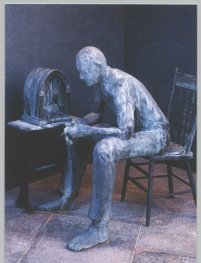
RADIO
- 100 Years of
Radio--Marconi
- Old Time Radio (OTR) WWW
Page
- Surfing the
Aether--history
of radio
- Antique Radio
Page
- Phil's Old
Radios -- Antique Radio Gallery
- Public Broadcasting Corp
- NPR Online
- Radio Classics--RealAudio
versions of the classic programs
- Case study: Impacts of listening to
Limbaugh on Americans' confidence in the Clinton administration
ADVERTISING
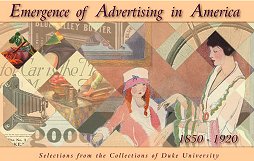
PUBLIC
RELATIONS
- Public Relations Society of America
Home Page
- Spector and Associate's
"Museum
of Public Relations"
- The Museum of Public
Relations

EXPLORING THE CONCEPT
OF "MEDIA
LITERACY"
 From what I hear, one current focus of media researchers is "media
literacy." In part, an outgrowth of the likes of the missile gap of
the old, Americans nowadays are supposedly more susceptible to the stream
of electronic messages than those of other developed (particularly European)
nations. Their lack of cognitive immunity from the emotional and irrational
component of these messages derives from their media illiteracy.
From what I hear, one current focus of media researchers is "media
literacy." In part, an outgrowth of the likes of the missile gap of
the old, Americans nowadays are supposedly more susceptible to the stream
of electronic messages than those of other developed (particularly European)
nations. Their lack of cognitive immunity from the emotional and irrational
component of these messages derives from their media illiteracy.
There are, not surprisingly, a number of groups having a vested interest
in this concept and "problem." For the academic field of communications
studies, for instance, it is what defines the discipline and what distinguishes
it from the myriad of social sciences--and what prevents the discipline
from slipping to a media technologies training profession on par with medical
technicians and dental hygienists. For those in English, media literacy
provides opportunities for grant monies and for expanding the discipline's
purview beyond critical/competitive reading/interpretation of paper-based
works in an increasingly non- reading, paperless, multimedia world.
Nevertheless, there can be little question that the media
ecology produces intriguing effects on its consumers' cognitions, values, identities and
behaviors. Perhaps most-studied nowadays is the influence
of media violence on aggressive behavior. Further, there's how
television provides its viewers with role models in societal situations
for which prior generations did not supply scripts, such as the 37 extramarital affairs that
Dallas presented during the 1980s. But it is a proverbial two-way street: media
power is a function of audience receptivity. Might it be the case, as Muriel Cantor (1987)
argues, that people turn to television as a substitute for real experience because of their feelings
of helplessness. Click here for studies of the effects of
television and radio on the American voter.
And then there's the matter of understanding how mediums' information streams
can be contextualized, or framed, by the
viewpoints of presenters. If, for instance, a story item conforms to the
mindset of those deciding what's "news" then it is more likely to be
reported in the press (i.e., in 1992, making Presidential candidate Dan Quayle's
"potatoe" misspelling in a grade school classroom a news story because
it reaffirmed the belief that he was not the most intellectually gifted of the
candidates).
- Center for Media
Literacy--replete with Media&Values
archive
- Yahoo!
- Media Literacy sites
- Media Awareness Network (award
winning Canadian site)
- Media Research Center media literacy lessons from the
right--with video collection of Gore gaffes but none of Bush's
- The Center for Public Integrity: Investigative Journalism in the Public Interest
--these are the folks who in 2008 reported how in the two years following 9/11 President Bush and his top officials made at
least 935 false claims about the Iraqi threat in order to galvanize public opinion for war
- Media
Literacy Online Project
- Media
Literacy from KQED
- From the Museum of Hoaxes, test your pop culture literacy with the
Hoax Photo Test

 Return to A Sociological Tour Through
Cyberspace
Return to A Sociological Tour Through
Cyberspace



 So from where do Americans get their information about the events shaping the
course of their lives? In addition to my own analyses of the
1995 Washington Post/Kaiser Foundation "Why Don't Americans Trust the
Government" survey, take a look at the 1998
Pew Research Center's Biennial News Consumption
Survey. Notice an increase in fake news reporting politically- (or
corporately-) slanted "research"? Check out the sources at
SourceWatch.
So from where do Americans get their information about the events shaping the
course of their lives? In addition to my own analyses of the
1995 Washington Post/Kaiser Foundation "Why Don't Americans Trust the
Government" survey, take a look at the 1998
Pew Research Center's Biennial News Consumption
Survey. Notice an increase in fake news reporting politically- (or
corporately-) slanted "research"? Check out the sources at
SourceWatch.![]() Sociology of knowledge types must be having a
field day these days. With the internet, information is no longer
filtered by such traditional intermediaries as gatekeepers and opinion
leaders. Have an ailment like Graves Disease and, with the resources
on the WWW, one can be more up-to-date than one's overworked, HMO-ed
endocrinologist. Want to check the veracity of a Presidential candidate's
claims? According to the Pew Internet
& American Life project's 2001 study, more than one-half of those with
work access and one-quarter of those with home access said they went online
several times a day.
Sociology of knowledge types must be having a
field day these days. With the internet, information is no longer
filtered by such traditional intermediaries as gatekeepers and opinion
leaders. Have an ailment like Graves Disease and, with the resources
on the WWW, one can be more up-to-date than one's overworked, HMO-ed
endocrinologist. Want to check the veracity of a Presidential candidate's
claims? According to the Pew Internet
& American Life project's 2001 study, more than one-half of those with
work access and one-quarter of those with home access said they went online
several times a day.
 According to a study by search engine maker Inktomi
and the NEC Research
Institute, the year 2000 began with one billion pages on the Web. In the
Presidential campaign of that year, candidate Al Gore argued that high-speed
internet access "a fundamental civil right." Track the top
subjects of daily searches at Yahoo! with its Buzz
Index.
According to a study by search engine maker Inktomi
and the NEC Research
Institute, the year 2000 began with one billion pages on the Web. In the
Presidential campaign of that year, candidate Al Gore argued that high-speed
internet access "a fundamental civil right." Track the top
subjects of daily searches at Yahoo! with its Buzz
Index.
 Undoubtedly the web's greatest impact is its democratization of messages.
With this medium, anyone can be a news reporter or anchor, columnist, reviewer
or critic, news or documentary photographer, artist,
broadcaster, DJ, music distributor, film producer,
teacher, PR department, or advertising agency, and have one's messages
disseminated worldwide.
Undoubtedly the web's greatest impact is its democratization of messages.
With this medium, anyone can be a news reporter or anchor, columnist, reviewer
or critic, news or documentary photographer, artist,
broadcaster, DJ, music distributor, film producer,
teacher, PR department, or advertising agency, and have one's messages
disseminated worldwide.

![]()



![]()
 One half century after television's entry into American homes, the
medium remains a favorite scapegoat for the multitude of perceived social
and cultural ills arising in post-war American society. Its audience-attracting
themes of violence, for instance, are seen to underlie the historically-increasing
rates of aggression and homicide. U.S. News & World Report charged
in 1955 that the very mind and character of Americans was being altered
by television. Over the next twenty years the medium's potency to affect
both identity and social structure was to attract the energies of scholars
and popular writers alike. Among its suspected effects were (followed by
year argument first appearing according to author's informal survey of
popular literatures):
One half century after television's entry into American homes, the
medium remains a favorite scapegoat for the multitude of perceived social
and cultural ills arising in post-war American society. Its audience-attracting
themes of violence, for instance, are seen to underlie the historically-increasing
rates of aggression and homicide. U.S. News & World Report charged
in 1955 that the very mind and character of Americans was being altered
by television. Over the next twenty years the medium's potency to affect
both identity and social structure was to attract the energies of scholars
and popular writers alike. Among its suspected effects were (followed by
year argument first appearing according to author's informal survey of
popular literatures): ![]() In the 1980s, the medium was accused of having effectively destroyed
childhood as a developmental stage (Postman 1982). In 1990, a Gallup survey
found nearly seven in ten Americans believing that they would be better
off or at least not adversely affected if television was to disappear from
their lives.
In the 1980s, the medium was accused of having effectively destroyed
childhood as a developmental stage (Postman 1982). In 1990, a Gallup survey
found nearly seven in ten Americans believing that they would be better
off or at least not adversely affected if television was to disappear from
their lives. And so for the past forty years the radio generation has informed
the younger television generations that they have been cognitively impaired
by their viewing practices, with such symptoms as shortened attention spans,
weakened linguistic abilities, eroded imaginations, impatience with
deferred gratification, and inability to distinguish information from wisdom. On the other hand,
radio was praised for its ability to evoke imagery, its creativity, and its ability to present
dramatic events. In fact, television's "Golden Years," we're told, coincided to
its early era when controlled by the radio elite. One wonders whether the
next forty years will feature the television generations similarly belittling
the virtual reality generations
And so for the past forty years the radio generation has informed
the younger television generations that they have been cognitively impaired
by their viewing practices, with such symptoms as shortened attention spans,
weakened linguistic abilities, eroded imaginations, impatience with
deferred gratification, and inability to distinguish information from wisdom. On the other hand,
radio was praised for its ability to evoke imagery, its creativity, and its ability to present
dramatic events. In fact, television's "Golden Years," we're told, coincided to
its early era when controlled by the radio elite. One wonders whether the
next forty years will feature the television generations similarly belittling
the virtual reality generations There is a prevalent view that the printed page is the only truly
intellectual medium. Other media are suspect in terms of their ability
to satisfy educational needs and are portrayed as "mere" entertainment,
at the least offensive end of the spectrum of contempt, to the creation
of mindless followers whose very emotional state is molded by the non-
print media, at the most hostile end of the spectrum. There is, one suspects,
a bit of the Protestant Ethic embedded in these critiques: if it is fun
and easy it must be bad; intellectual stimulation must be difficult, time
consuming, and "work."
There is a prevalent view that the printed page is the only truly
intellectual medium. Other media are suspect in terms of their ability
to satisfy educational needs and are portrayed as "mere" entertainment,
at the least offensive end of the spectrum of contempt, to the creation
of mindless followers whose very emotional state is molded by the non-
print media, at the most hostile end of the spectrum. There is, one suspects,
a bit of the Protestant Ethic embedded in these critiques: if it is fun
and easy it must be bad; intellectual stimulation must be difficult, time
consuming, and "work."



 Microscope Home Page: Best Ads
On The Web
Microscope Home Page: Best Ads
On The Web ![]()
 From what I hear, one current focus of media researchers is "media
literacy." In part, an outgrowth of the likes of the missile gap of
the old, Americans nowadays are supposedly more susceptible to the stream
of electronic messages than those of other developed (particularly European)
nations. Their lack of cognitive immunity from the emotional and irrational
component of these messages derives from their media illiteracy.
From what I hear, one current focus of media researchers is "media
literacy." In part, an outgrowth of the likes of the missile gap of
the old, Americans nowadays are supposedly more susceptible to the stream
of electronic messages than those of other developed (particularly European)
nations. Their lack of cognitive immunity from the emotional and irrational
component of these messages derives from their media illiteracy. ![]()